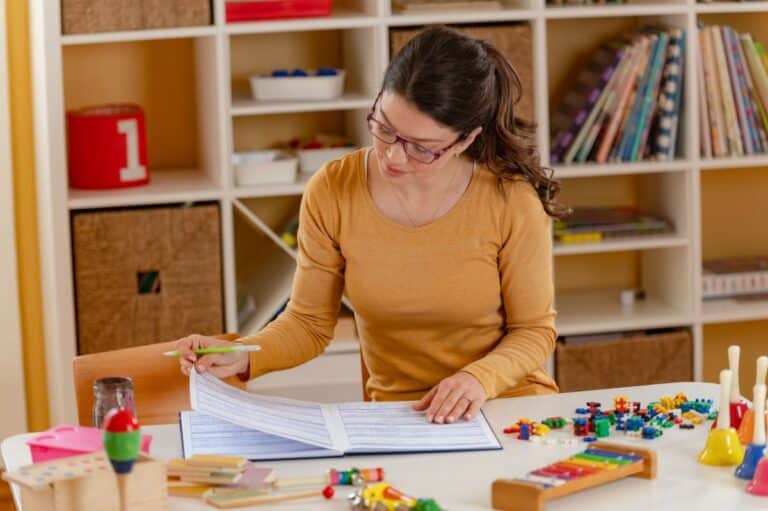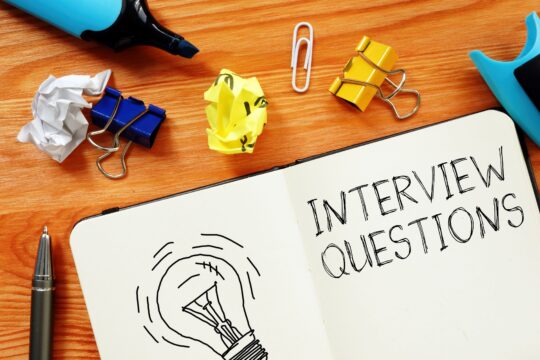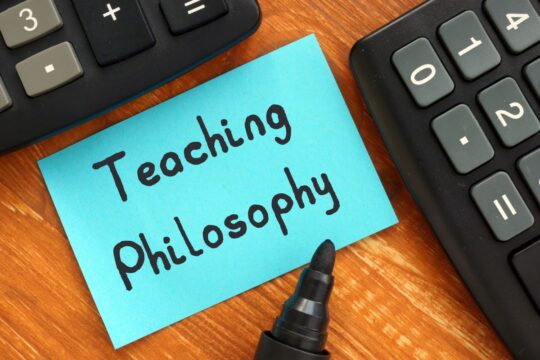If you’re a new teacher, you’ve probably stared at a blank lesson plan template wondering where to even begin. Maybe you’ve Googled examples or asked for help, only to feel more confused than before. That’s okay and is totally normal. Lesson planning can feel like a huge task at first, but once you get the hang of it, it becomes a routine part of your day.
Here’s a step-by-step breakdown of what goes into a lesson plan, and how to get better at it without burning yourself out. Whether you’re preparing for the week or putting something together the night before (we’ve all been there), this guide is here to help.
Start with the end in Mind
Before you start prepping a fun game or creating a colorful chart, ask yourself, “What do I want my students to learn by the end of this lesson?” This is your learning objective. This is an essential component that needs to be clear and tied to your curriculum or standards.
Your goal is to guide students toward a specific skill or piece of knowledge. Here is an example of a math learning objective that is short and to the point.
“Students will solve one-step multiplication word problems with 80% accuracy.”
Here is another example, this time for ELA.
“Students will be able to identify the main idea and two supporting details from a nonfiction text.”
If your district uses standards-based grading, line up your objectives with those benchmarks. Some schools require objectives written in student-friendly language to be posted on the board, so be sure to check your school’s expectations.
Choose Materials and Resources
Once you have figured out your objective, next it’s time to choose the materials and resources you need to teach it. Take a look at your teacher’s manual, past lessons, or any trusted online resources you like to use. If your curriculum already gives you materials or texts to go with the lesson, that’s a bonus. If not, grab a quick video, a picture book, or even something from real life that helps bring the lesson to life. Just make sure everything connects back to the goal of your lesson.
This is also a good time to gather any handouts, digital tools, anchor charts, or manipulatives. You don’t want to be scrambling for supplies with students staring at you.
Map Out Your Lesson
Think about the flow of your lesson. A good lesson plan typically follows this format.
Warm-Up or Hook
Your warm-up or hook is how you will get students interested in the topic. This can be asking students a question, showing them a short video, or even a funny meme that ties into your topic. This only takes about 5-15 minutes, just long enough to set the stage for the lesson.
Warm-up Examples
- A question related to the topic
- Give students a sentence starter related to the question
- Have students sketch the concept
Hook Examples
- Short video clip
- Photo prompt
- Turn and talk
Direct Instruction or Mini-Lesson
This is where you introduce new content. Keep it simple, model the skill, explain the concept, and use visuals or examples when you can. This part should take about 10-15 minutes to complete.
Guided Practice
This part of the lesson plan is where you allow students to try out the concept with your help. You’re not turning them loose just yet. Instead, you’re walking them through it step by step, checking in, asking questions, and giving feedback along the way.
Here’s what guided practice might look like:
- You solve a problem on the board and have students do one just like it with you.
- Read a paragraph together as a class, then work as a group to find the main idea.
- You write a sentence and model how to add descriptive words, then ask students to try it on their own paper while you circulate to help.
The goal is to help students build confidence and catch mistakes early before they move on to independent work.
Independent Practice
Students are now ready to practice what they have learned on their own. This could be an activity, a worksheet, writing prompt, or group work, whatever makes sense for the skill. The key is to make sure the task is connected to the objective. It should give students a chance to apply what they’ve just practiced with you during guided instruction.
Closure
End the lesson with a brief wrap-up and review. This can be something as simple as an exit ticket, quick reflection in a journal, or even just answering a few questions together as a class. Just a quick way to check for understanding and so students have a chance to think about what they’ve learned.
Differentiate for Diverse Learners
Think about how you can adjust instruction to meet the needs of all learners. You don’t need five different lesson plans to support or challenge students; just a few tweaks can go a long way. Here are a few ideas.
- Offer sentence starters or graphic organizers for writing tasks.
- Provide word banks or read-aloud support for struggling readers.
- Let advanced students tackle a more complex problem or write from a different perspective.
- Use visuals, movement, or songs to reach multiple learning styles.
- Create a choice board where students choose their own tasks to complete.
Plan for Assessment
Assessment doesn’t necessarily mean a test, quiz, or creating a rubric. It can easily be something quick and informal like an exit ticket to check for understanding, a thumbs up or down, or even just observing students during guided practice. The ultimate goal is to see if students grasped the new information or if you have to reteach it.
Keep Track of Your Time
One of the hardest parts of lesson planning is figuring out how long everything will take. You’ll probably over-plan at first, which is actually a good thing. It’s better to have a backup activity than to finish 15 minutes early and have nothing to do.
Write down approximate times for each section of your lesson. This keeps your pacing on track and helps you stay focused. And don’t forget, transitions—moving from one task to another takes time, especially with younger students.
Build a Routine
Lesson planning gets easier the more you do it. Eventually, you’ll find a rhythm that works for you. Some teachers like to plan everything for the week, while others do it day by day. You’ll figure out what works best for you in time.
Remember, templates can be a huge help, and keeping digital folders makes things even easier. Both let you tweak, reuse, and build off what you’ve already created, saving you time down the road. Once you find a format that works for you, stick with it and make small adjustments as needed. Over time, you’ll build a solid collection of lessons you can pull from without starting from scratch every time.
Lesson planning is a skill that takes time to develop. The more you do it, the better you’ll get at it!
You’ve got important career goals — we have the graduate program to get you there. Check out our available graduate degree programs to advance your career today!




